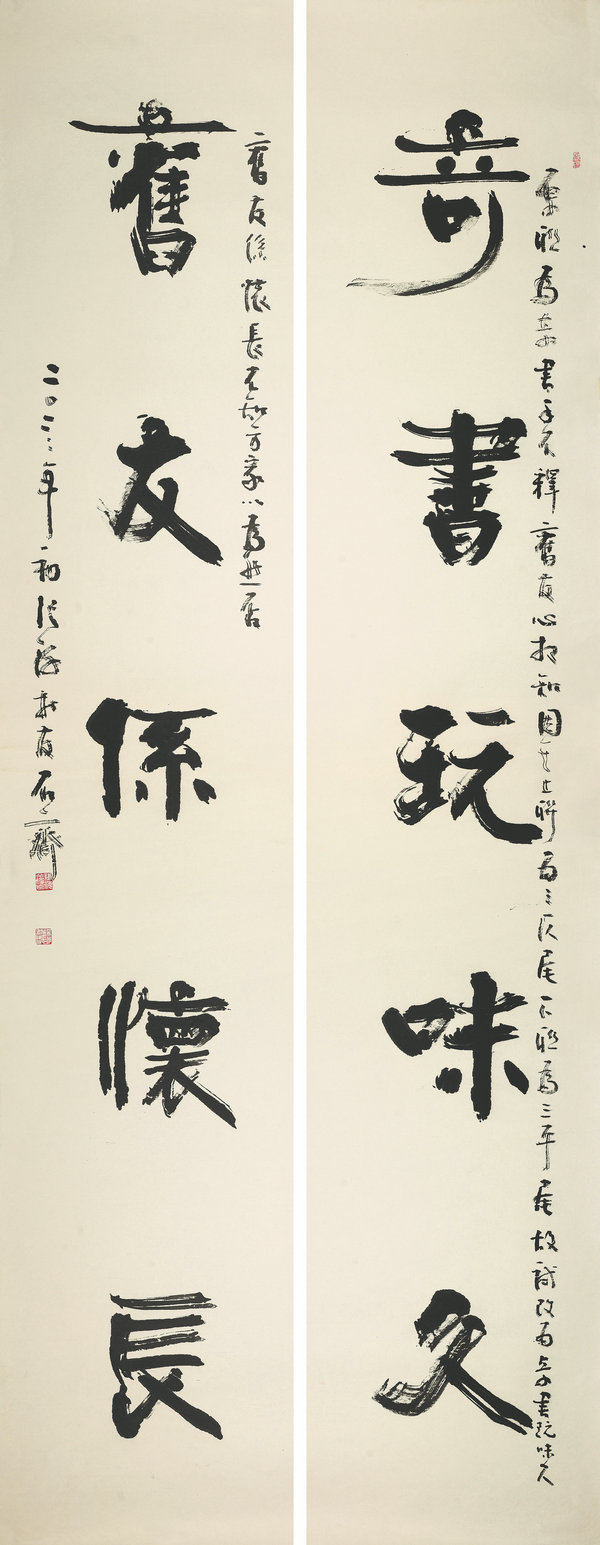

Zhang Hai remembers how impressed he was by his primary school teacher's neat writing on the chalkboard.
"I said to myself then that I want to write as well as he does someday."
The 82-year-old fulfilled his childhood dream years later — but using different tools on a different medium.
Zhang is regarded as a leading figure in the creation, research and teaching of calligraphy, and serves as the honorary chairman of the China Calligraphers Association.
He continues to endeavor in this field, seeking further breakthroughs to carry on its cultural lineage.
The work he created after turning 80 is part of his calligraphy exhibition, Moving Steady to Get Far, running at the National Art Museum of China in Beijing through Saturday.

The preliminary stage of calligraphy accompanied the formation of Chinese characters, including those inscribed on animal bones, tortoise shells and bronze ware millennia ago. It gradually evolved into a category of aesthetic values and an independent form of fine art, and developed major styles, including zhuanshu (seal script), lishu (clerical script), kaishu (regular script), xingshu (running script) and caoshu (cursive script).
Like many masterful predecessors of calligraphy in history, Zhang attempts to push forward the frontiers as an important vehicle showing not only the skeletal beauty of characters, but also as a highly individualized form revealing the writer's emotions, as he makes the brush an extension of his body and mind to create chemistry between pen and paper.